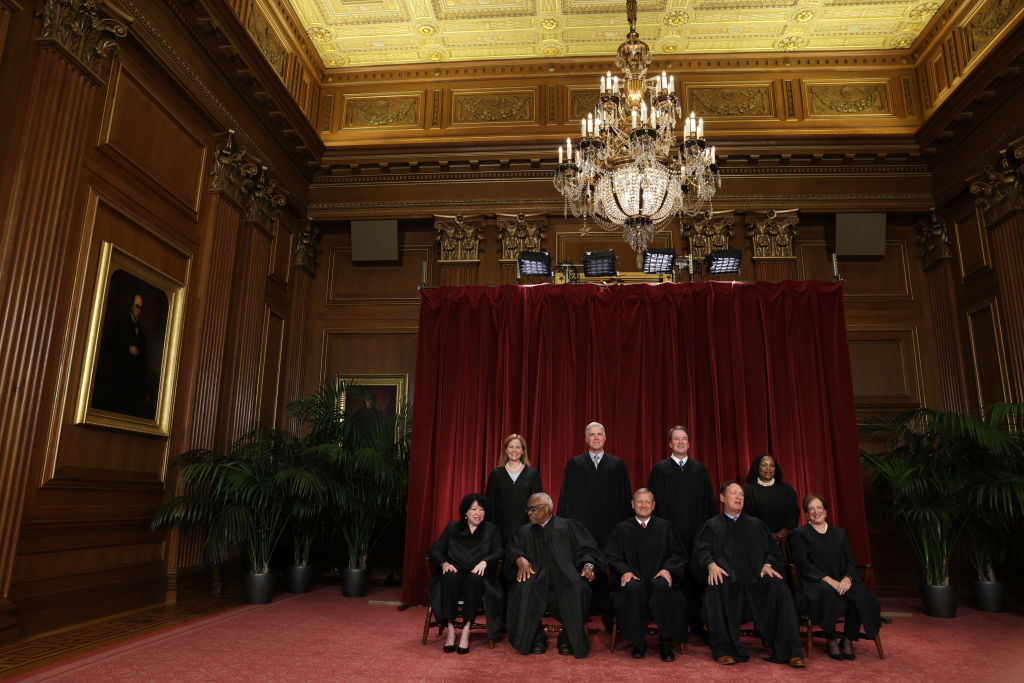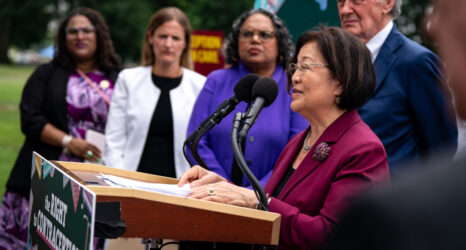By resurfacing the stories that motivated the passage of the Reconstruction Amendments, we can see the truly misguided rationale for recent rulings on issues like abortion and voting rights.

In the coming months, the Supreme Court is poised to make monumental decisions—on presidential immunity, racial gerrymandering and abortion pills—that stand to harm marginalized people and reinforce the privileges of wealth and whiteness.
Perhaps it is unremarkable that an institution dominated by white men since its inception struggles to be inclusive, given that only six women, two of whom are women of color, and two men of color, have served among the 116 justices.
But the Roberts Court’s consideration of the Reconstruction Amendments—the 13th, 14th and 15th Amendments to the Constitution—is especially alarming. These amendments ended slavery (though not for incarcerated people), granted equal protection and the privileges and immunities of citizenship to newly freed people, and extended the vote to Black men. Their provenance should be of utmost importance.
The Roberts Court’s quest to roll back rights has ushered in an insular version of history that radically restructures the understanding of the intent and scope of crucial elements of the Constitution. We can best challenge these efforts by meeting the Court’s warped history with actual history.
Neglected Stories, a book published over 25 years ago by NYU Law Professor Peggy Cooper Davis, is just what is needed to do so. Davis argues that our understanding of the Reconstruction Amendments must be rooted in the devastating stories of torment and rights depravations enslaved people experienced in the U.S. system of chattel slavery. It is only by resurfacing the stories that motivated the passage of the Reconstruction Amendments that one can see how truly misguided the rationale for recent rulings on issues like abortion and voting rights have been.
Davis’s neglected stories illuminate the radical nature of the period of Reconstruction: the amendments did not just free those who were enslaved; they laid a new foundation upon which we could build a better, more inclusive nation.
Given their genesis, it is not plausible that amendments created to return to a class of people their human right to live free and determine their own futures did not provide broad protections for privacy—in marriage, reproduction, parenting, sexual relationships and more.
Even so, in Dobbs, using a cherry-picked account of the history of abortion laws—laws created at a time when women could not vote—the majority of the Court determined that the Constitution does not protect a right to abortion. Surely being able to choose or reject pregnancy was a fundamental right that enslaved women deserved as part of their freedom.
Our understanding of the Reconstruction Amendments must be rooted in the devastating stories of torment and rights depravations enslaved people experienced in the U.S. system of chattel slavery.
The Reconstruction Amendments extended the franchise to Black men recognizing that practices that excluded certain people from the most basic of civil rights, the right to vote, denied them the ability to participate in the creation of the rules that govern them. Even so, this Supreme Court has chipped away at voting rights by enabling gerrymandering and unduly restrictive voting rules that continually disenfranchise communities of color.
And, finally, the Reconstruction Amendments, together with race-conscious remedies like the Freedmen’s Bureau, recognized that merely removing barriers cannot create equality where systems of inequality remain intact and gave power to Congress to enforce the amendments with appropriate legislation. These efforts included providing necessities like food, housing and education—leading to the creation of historically Black colleges and universities—for newly freed African Americans and some poor whites. Even so, the Supreme Court majority wrests power away from those who could use it to right historical wrongs, including by rejecting the use of race as one part of a holistic review of college applications.
The era when Davis’ vision was most present was from 1959 to 1963. Under the leadership of Chief Justice Earl Warren, the Court decided Brown v. Board of Education, affirming that separate is inherently unequal in public education; Miranda v. Arizona, which required that arrestees be informed of their rights; Reynolds v. Sims, which mandated voting districts to offer substantially equal legislative representation to the state’s citizens; and Gideon v. Wainwright, which mandated the appointment of legal counsel for criminal defendants. In contrast to the Warren Court, which sought to bring us closer to the U.S. made possible by the Reconstruction Amendments, the current majority is reshaping our constitutional order in the very image crafted by the right-wing political machine that stacked the current Court.
In a 2007 opinion, Justice Roberts blithely declared, “The way to stop discrimination on the basis of race is to stop discriminating on the basis of race.” Such magical thinking cannot cut off the long tail of racial discrimination in the United States. The Reconstruction Amendments were a vital source of civil rights, and remain so today, but they cannot do their work when wielded by justices who believe that racism is a relic, that sexism and patriarchy are past failures, and that a sanitized version of the past helps us build the future we deserve and that is possible.
If—as Davis exhorts us to do—we thought about some of the most contentious issues the Court has adjudicated through the lens of the barriers to life, liberty and the pursuit of happiness that slavery created, it would lay bare the fallacy of the Court’s current rationale of the purpose of the Reconstruction Amendments. We are only as good as the stories we tell, and we deserve better than the tall tales the Roberts Court is spinning.
Up next:
U.S. democracy is at a dangerous inflection point—from the demise of abortion rights, to a lack of pay equity and parental leave, to skyrocketing maternal mortality, and attacks on trans health. Left unchecked, these crises will lead to wider gaps in political participation and representation. For 50 years, Ms. has been forging feminist journalism—reporting, rebelling and truth-telling from the front-lines, championing the Equal Rights Amendment, and centering the stories of those most impacted. With all that’s at stake for equality, we are redoubling our commitment for the next 50 years. In turn, we need your help, Support Ms. today with a donation—any amount that is meaningful to you. For as little as $5 each month, you’ll receive the print magazine along with our e-newsletters, action alerts, and invitations to Ms. Studios events and podcasts. We are grateful for your loyalty and ferocity.





